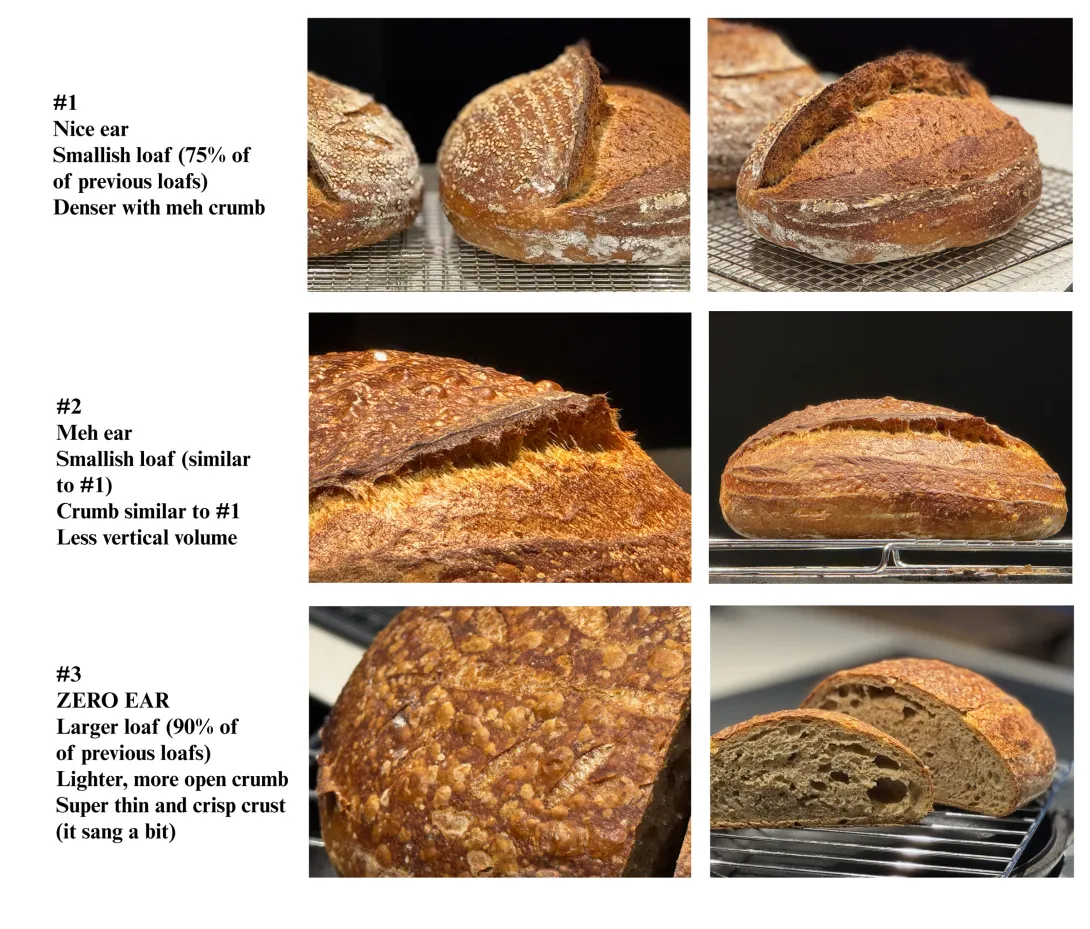
I'm in Canada so understand our standard flours are generally decent quality to begin with. Up until now, I've been baking with a mix of white bread, ww, and rye with decent results. I've also tried a couple of simple white bread flour loafs but found them to be boring in flavour. As a result, I wanted to make a "white" sourdough that had more flavour and complexity.
My journey took me to The Flourist and red fife.
I hadn't baked many sourdoughs lately so my first loaf felt off. Wasn't sure if I was getting my timing quite right. Not to mention, it's winter and the average room temperature is lower. The bread was okay but didn't have a particularly good ear and seemed a bit denser than my other loafs previous. It seems I under-proofed it a bit. Odd because the dough seemed slack. Oh well, lesson learned. Flavour was nicer than the plain white breads I made before so worth it to try again.
For my second loaf, I used the light in my oven to create a warmer environment. Starter was healthy, but the dough again seemed slack. Maybe I'm over-fermenting this time? Bread came out about the same... less of an ear. Okay but not amazing oven spring. Again, loaf came out smaller than what I'm used to with my original flour mix. Hmmmm. What am I not doing properly.
For my third loaf (not shown in images), I decided to decrease the hydration. Maybe this flour doesn't work with the higher water content? Again, not exceptional oven spring and denser do to the lower water content. Ear was about the same. Arggghhhh!
Today, I was determined to get it right. My starter was good. My measurements were good (based on 80% hydration). Decided to not use the warmer environment of the oven light so I can pay more attention to the dough. Dough was kinda slack again. "Why can't I get it right?!?!" I thought. Formed the dough. Into the banneton. Cold proofed overnight. Baked. When I took the top off my baking pan halfway through baking, I was optimistic. The size of the load seemed like an improvement but this time, ZERO EAR! WTF? Nothing I can do now but just let it finish. What came out was kinda surprising. As mentioned, the loaf was bigger than the previous but just had no ear at all. It felt light but had lovely blisters and the colour was beautiful. When I went to cut into it, it had the incredibly thin but crisp - almost perfect - crust but because it was light, I had to be more delicate cutting it. Except for the complete lack of an ear, it was still the best loaf with red fife yet. Relatively open crumb (maybe a tiny bit over-proofed?) Appearance wise, it was meh. Texture wise, it was MMMmmmmm!
What the heck is going on? I can't seem to get a good ear AND get good volume, which seems completely counter-intuitive!
So that brought me here. Lo and behold, these are the challenges with red fife and I am not the first to experience these challenges. Who knew this was a known battle with red fife!?!?
Mix 14g chia seeds + 108g water. Set aside and allow to gel for 5 -10 minutes.
Then build the dough by adding the chia seeds first + as much water till you get the correct consistency. Aim for tack but not sticky.
This should enable you to increase the hydration plus improve the structure and crumb.
Hmmm. Interesting. I'll look into trying that. Is this something you've done with a challenging flour?
Transforms the flour.
https://forum.breadtopia.com/t/durum-and-spelt-chia-sourdough/
Made it a pleasure to handle and the crumb was the best spelt, and durum, crumb i've had.
Good volume but little or no ear suggest that the proof was too long (or possibly the bulk fermentation). Maybe this lot of red fife just doesn't play well with long ferments?
TomP
Good to know. Yeah, I'm learning red fife is a different type of flour and I can't use a standard method of working with it. Just didn't know it was a challenge for everyone! LOL! Question would be, how to get the volume if I don't let it proof appropriately!
I found this quote regarding Red Fife:
(from https://thescottishmill.ca/blogs/recipes/recipe-1?utm_source=chatgpt.com)
Thanks for that! It’s all good info and hope it’ll help get a nice sourdough with this flour. I really do enjoy the texture of my newest loaf. No ear is the only negative